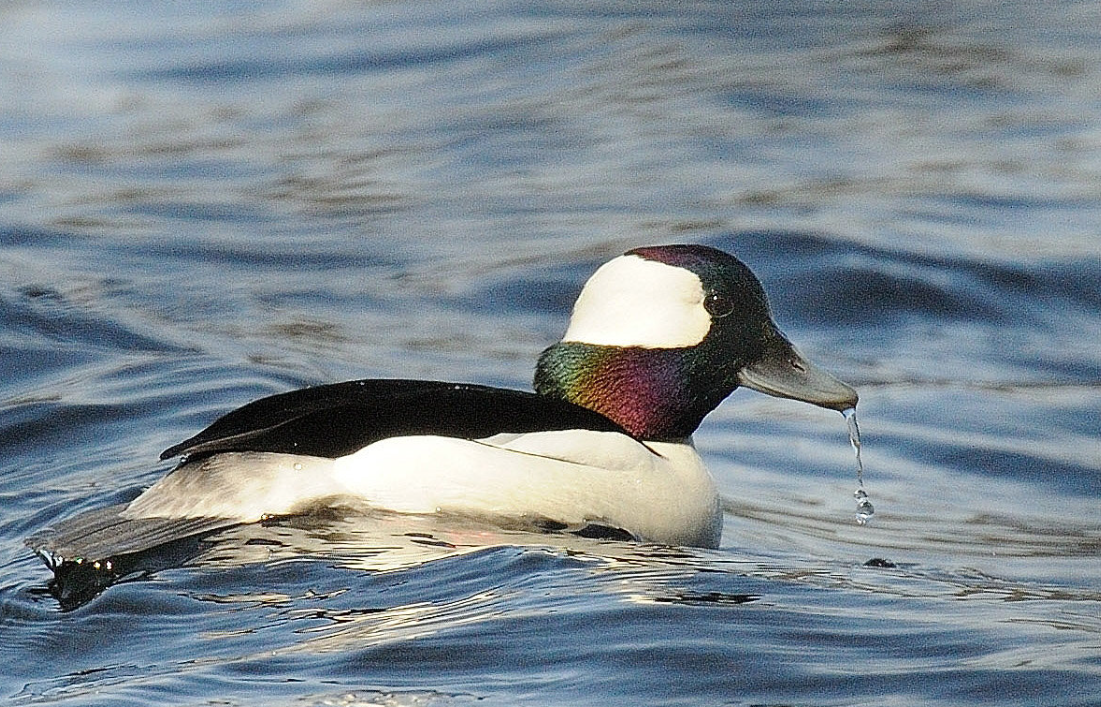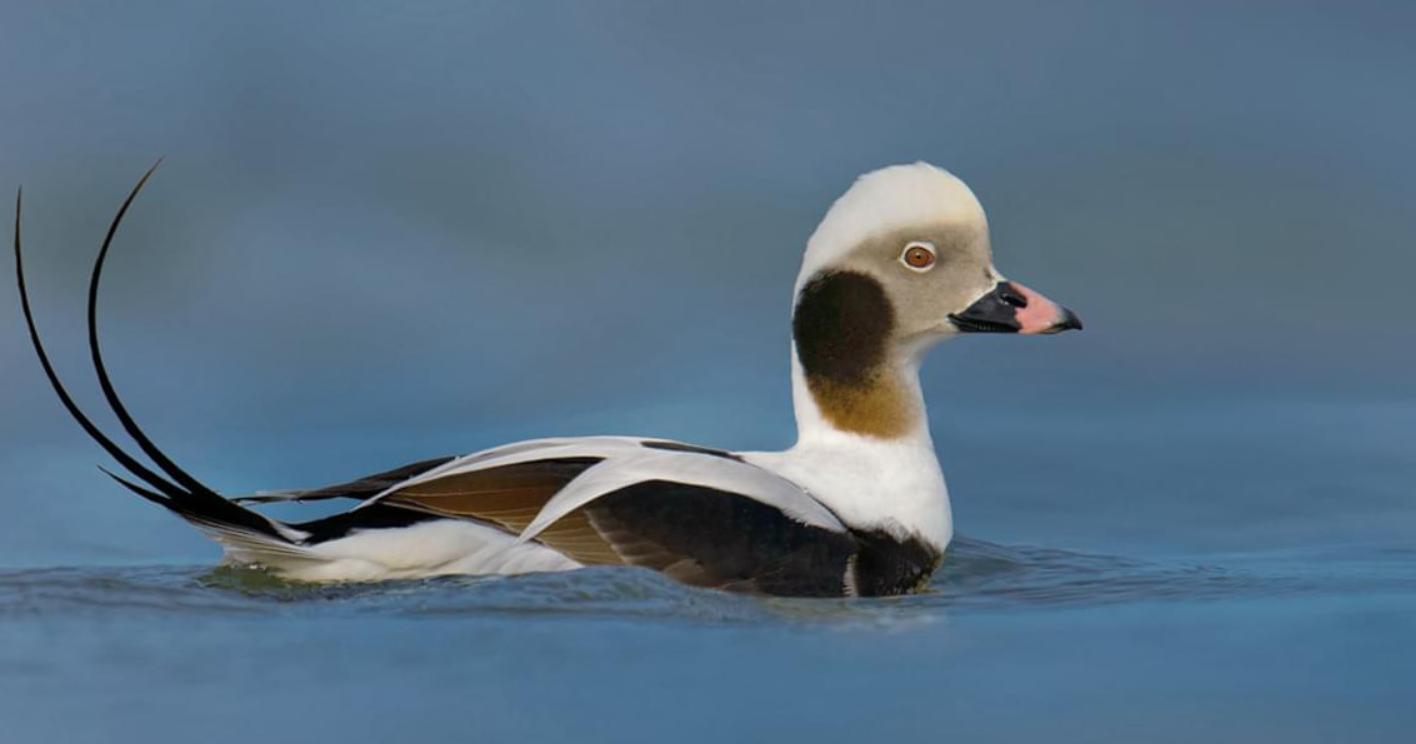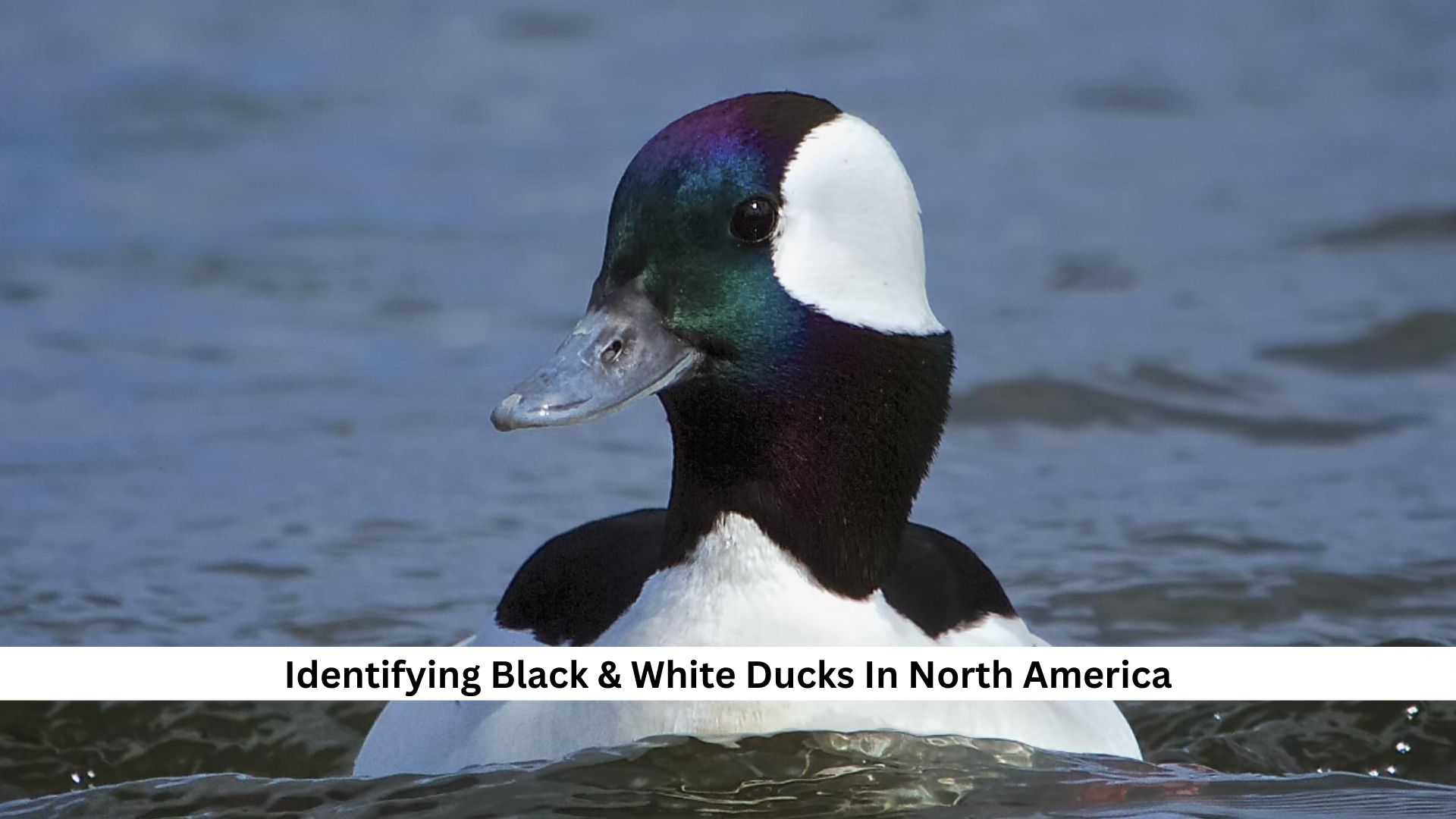Spotting black and white ducks in North America is both a challenge and a treat for bird lovers and experts. Every duck, from the eye-catching Bufflehead to the majestic Common Eider, has unique marks and behaviors that help us tell them apart. But catching these tiny differences takes a sharp eye and a good understanding of how birds behave. As we dive into the world of these ducks, it’s interesting to think about how these traits help them survive and thrive in various places. What can we learn about the roles these ducks play in their ecosystems from observing their patterns?
Key Features for Identifying Black & White Ducks
Plumage Patterns
Plumage patterns are key to telling different kinds of black and white ducks apart in North America. Take the Bufflehead, for example. It has a clear white spot on the back of its head that stands out against its black body. Then there’s the Common Eider, which is mostly white with black on its belly and tail, easy to spot along the coast. Both the Common and Barrow’s Goldeneyes have distinctive white marks on their dark heads, which really help to identify them.
Size and Shape
When identifying black and white ducks in North America, it’s really helpful to know about their size and shape. Take the Bufflehead, for example. It’s a small, compact duck, only 13 to 16 inches long. This size helps tell it apart from bigger ducks. On the other hand, the Common Eider is pretty big, about 24 to 28 inches, and it has a unique, long sloped bill which makes it stand out. These details really make a difference when you’re trying to figure out what type of duck you’re looking at.
Behavior and Habitat
When you spot different ducks, like the small Bufflehead or the bigger Common Eider, it’s not just their size and color that help you tell them apart. Where they hang out and what they do there matter a lot too. Buffleheads are often seen in small freshwater spots like lakes or ponds when they’re migrating. On the other hand, Common Eiders are more into big sea coasts. Understanding where these ducks like to be and how they behave helps us identify them correctly, showing us that there’s more to birds than just looks.
Common Black & White Duck Species in North America
Bufflehead (Bucephala albeola)

The Bufflehead (Bucephala albeola) is a small, standout duck in North America known for its black and white colors. You’ll usually find these ducks in freshwater spots like lakes and ponds. They like being around trees which helps them hide from predators. These ducks are divers, really good at going underwater to find their food, which are mostly small water creatures.
| Attribute | Details |
|---|---|
| Length | 13-16 inches |
| Colors | Black and white |
| Bill | Dark, short |
| Habitat | Freshwater lakes, ponds near trees |
| Feeding | Dives underwater for small water creatures |
| Unique Traits | Big white patch on the head, a small size |
Common Eider (Somateria mollissima)

The Common Eider (Somateria mollissima) is a big duck with striking black and white feathers. They have a hefty build and a long, downward-sloping bill perfect for digging around rocky seabeds for food.
Male eiders are easy to spot with their bold black and white colors. Females, though, have a softer brown look that helps them blend in with the shore when they nest. Eiders like to hang out in big groups, especially in the colder months. They mostly eat mollusks and crustaceans, pulling them out from under the sea floor.
| Attribute | Details |
|---|---|
| Length | 24-28 inches |
| Colors | Black and white |
| Bill | Long, downward sloping |
| Habitat | Coastal North America |
| Feeding | Digs in rocky seabeds for mollusks and crustaceans |
| Unique Traits | Large size, different male/female coloring |
Long-Tailed Duck (Clangula hyemalis)

Let’s talk about the Long-Tailed Duck (Clangula hyemalis), a bird that really stands out among North American waterfowl. It’s not just any duck—it has these long tail feathers that make it look bigger than it really is.
Now, this duck loves the cold. It thrives in Arctic waters, bays, and estuaries. It’s an expert diver, going deep underwater to grab aquatic bugs and fish to eat. And it’s not just about looks or where it lives—this duck is also known for its voice. It makes a whole bunch of different sounds that really make you notice it.
| Attribute | Details |
|---|---|
| Length | 18-23 inches |
| Colors | Black, white |
| Bill | Pink with a black tip |
| Habitat | Arctic waters, bays, estuaries |
| Feeding | Dives for aquatic bugs and fish |
| Unique Traits | Long tail feathers, diverse vocalizations |
Common Goldeneye (Bucephala clangula)

The Common Goldeneye (Bucephala clangula) is a black and white duck that catches your eye. The males are especially striking with their bright white bodies and dark heads. The females are less flashy, sporting a brown head with a similar white patch.
They are divers, plunging underwater to snag small fish, insects, and other water critters. They’re also strong, fast fliers. When it comes to mating, Goldeneyes have a unique style.
| Attribute | Details |
|---|---|
| Length | 16-20 inches |
| Colors | Black and white |
| Bill | Black, tilts upwards |
| Habitat | Freshwater lakes, rivers, coastlines |
| Feeding | Dives for small fish, insects, and other water critters |
| Unique Traits | Bold white spot near the eye, strong and fast fliers |
Barrow’s Goldeneye (Bucephala islandica)

Shifting our focus from the Common Goldeneye, let’s talk about its cousin, Barrow’s Goldeneye (Bucephala islandica). This bird is a bit bigger than the Common Goldeneye. The males have a unique look with a short, stout bill and white crescents on their faces. The females aren’t as flashy; they sport a chocolate-brown head and a white patch at the bill’s base.
| Attribute | Details |
|---|---|
| Length | Similar to Common Goldeneye |
| Colors | Black and white |
| Bill | Short, stout |
| Habitat | Cold freshwater lakes, coastal waters |
| Feeding | Similar diving habits as Common Goldeneye |
| Unique Traits | Nests in tree cavities, unique facial white crescents |
Tips for Duck Identification in the Field
Observing from a Distance
Watching ducks from a distance needs sharp eyes and a smart plan. You want to see them well without scaring them off. It’s best to use binoculars or a spotting scope. This way, you can keep your distance and still make out their size, bill shape, and feather patterns.
Take the Bufflehead, for example. It’s small with a dark bill. The Common Eider, on the other hand, is bigger and has a sloped bill. Try to stay downwind and hide behind natural things like bushes. This makes it harder for the ducks to spot you, so you can watch them longer.
Noting Behavioral Cues
Studying how ducks behave helps a lot when trying to recognize different kinds. Pay attention to how they act in the water. For instance, diving ducks like the Common Goldeneye are experts at hunting underwater. In contrast, dabblers like the Bufflehead usually just tip forward into the water to feed.
Another clue is how they take off. Dabbling ducks can jump straight up into flight, but diving ducks need to run on the water for a bit before they can take off. Also, watch how ducks hang out with each other. Some ducks are very social and form big groups, while others might stick to just one partner or stay alone.
Utilizing Optics and Field Guides
To really get good at spotting different kinds of ducks, it helps a lot to use binoculars and a good bird-watching book. With binoculars, you can see the ducks up close without scaring them away. This is great for noticing the little details that tell one kind of duck from another. A pair that magnifies 8 to 10 times is usually just right for birdwatching.
Along with your binoculars, having a field guide is super helpful. These books are packed with info about different duck species, like pictures, where they live, and what they do. They’re especially good for pointing out things like the size of the duck, the shape of its bill, and its colors, which all help you figure out which type of duck you’re looking at.
Frequently Asked Questions
What Is the Best Time of Year to Observe Black & White Ducks?
The best time to see black and white ducks is in the spring and fall. You’ll see more of them, and a better variety, during these times.
Can Black & White Ducks Hybridize With Other Duck Species?
Black and white ducks sometimes mix with other duck types. This usually happens where their living areas meet. It’s more rare in the wild, though.
How Do Black & White Ducks Adapt to Changing Environments?
Black and white ducks deal with changes in their environment in a few ways. They change when and where they migrate, adjust when they breed, and use different places to find the food and shelter they need to survive as their habitats and climates change.
What Are the Migratory Patterns of Black & White Ducks?
Black and white ducks move around a lot, depending on the season. They usually spend summers up north where they have their babies, and when it gets cold, they head south to stay warm and find more food. It’s all about staying comfortable and having enough to eat.
How Do Juvenile Black & White Ducks Differ From Adults in Appearance?
Young black and white ducks don’t look quite as sharp as the older ones. Their feathers are softer in color and the patterns aren’t as clear. Adult ducks have strong, bold markings that really stand out, but the juveniles? They’re more on the subtle side.
Conclusion
Learning about black and white ducks in North America helps us enjoy nature more and support efforts to protect it. When we learn about ducks like the Bufflehead, Common Eider, and Long-Tailed Duck, we discover how they adapt and their roles in water habitats.
Knowing these ducks helps us watch wildlife responsibly and shows why it’s crucial to keep their homes safe. As we face climate change and loss of habitats, knowing about these ducks can inspire us to help more. We encourage everyone, not just enthusiasts, to keep learning and help local conservation projects. Every time we identify a duck, we’re not just learning—we’re also committing to look after these amazing birds and their homes. Keep visiting Animals District for more information like this.

